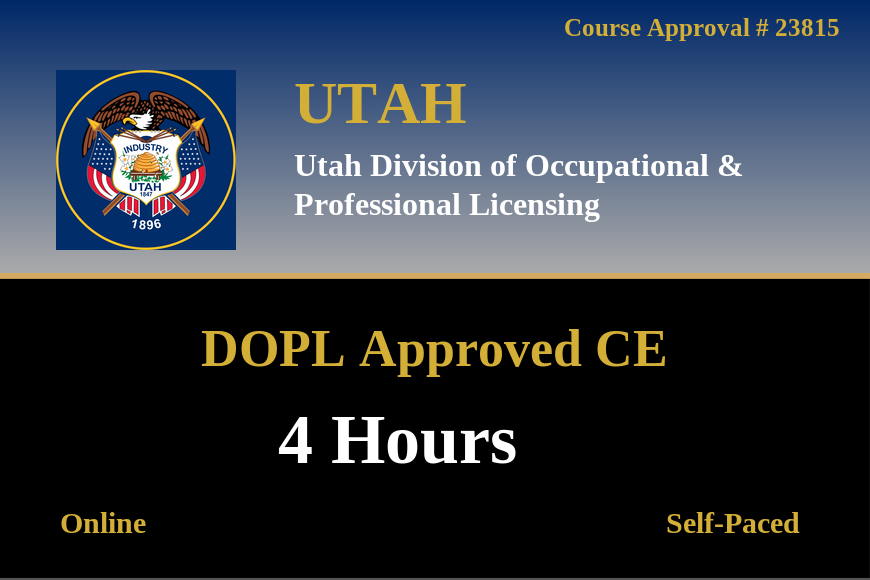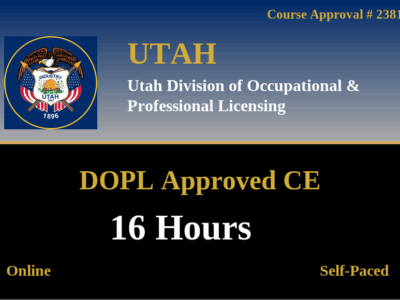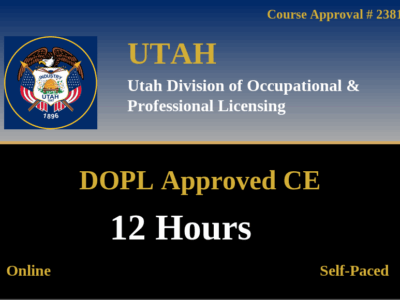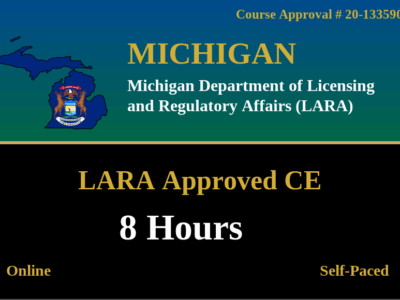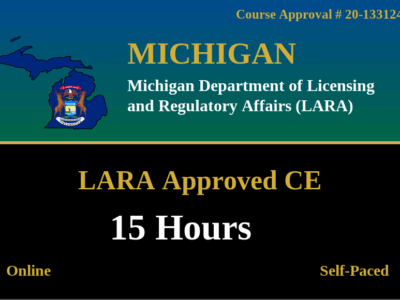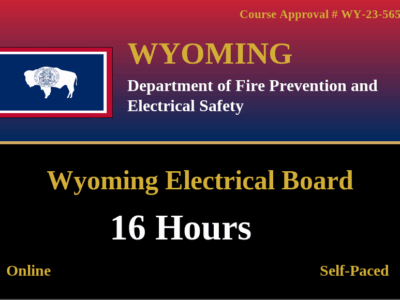The 4-Hour electrical safety course is designed for electricians to meet Utah’s license renewal requirements. This DOPL-approved course covers critical safety practices, including establishing electrically safe work conditions, applying safety-related procedures in various workplaces, and addressing hazards in substations, switchgear assemblies, switchboards, panelboards, motor control centers, and disconnect switches. It also emphasizes safety training requirements and specific safety protocols for working with capacitors.
Course Features
- Lectures 40
- Quizzes 40
- Duration 52 weeks
- Skill level All levels
- Language English
- Students 1
- Certificate Yes
- Assessments Self
- 1 Section
- 40 Lessons
- 52 Weeks
- NFPA 70E 2024 Course Content80
- 1.1Understanding the Purpose and Scope of NFPA 70E 2024 (Article 90)
- 1.2Quiz – Understanding the Purpose and Scope of NFPA 70E 2024 (Article 90)1 Question
- 1.3Key Definitions for Electrical Safety (Article 100)
- 1.4Quiz – Key Definitions for Electrical Safety (Article 100)1 Question
- 1.5Employer and Employee Responsibilities (Article 105)
- 1.6Quiz – Employer and Employee Responsibilities (Article 105)1 Question
- 1.7Core Elements of the Electrical Safety Program (ESP) [Section 110.2 & Section 110.3]
- 1.8Quiz – Core Elements of the Electrical Safety Program (ESP)1 Question
- 1.9Job Safety Planning and Job Briefings [Subdivision 110.3(I)]
- 1.10Quiz – Job Safety Planning and Job Briefings1 Question
- 1.11Training Requirements for Qualified and Unqualified Persons [Subdivision 110.4(A)]
- 1.12Quiz – Training Requirements for Qualified and Unqualified Persons1 Question
- 1.13Safe Selection and Use of Test Instruments [Section 110.6]
- 1.14Quiz – Safe Selection and Use of Test Instruments1 Question
- 1.15The Priority of an Electrically Safe Work Condition [Subdivision 110.2(B)]
- 1.16Quiz – The Priority of an Electrically Safe Work Condition1 Question
- 1.17Principles of a Lockout/Tagout (LOTO) Program [Section 120.3]
- 1.18Quiz – Principles of a Lockout/Tagout (LOTO) Program1 Question
- 1.19Simple vs. Complex Lockout/Tagout Procedures [Section 120.5]
- 1.20Quiz – Simple vs. Complex Lockout/Tagout Procedures1 Question
- 1.21The Step-by-Step De-energization Process [Section 120.6]
- 1.22Quiz – The Step-by-Step De-energization Process1 Question
- 1.23Verifying the Absence of Voltage [Subdivision 120.6(7)]
- 1.24Quiz – Verifying the Absence of Voltage1 Question
- 1.25Justifying Energized Work and the Energized Electrical Work Permit (EEWP)
- 1.26Quiz – Justifying Energized Work and the Energized Electrical Work Permit (EEWP)1 Question
- 1.27Performing an Electric Shock Risk Assessment [Section 130.4]
- 1.28Quiz – Performing a Shock Risk Assessment1 Question
- 1.29Limited and Restricted Approach Boundaries [Subdivision 130.4(E)]
- 1.30Quiz – Limited and Restricted Approach Boundaries1 Question
- 1.31Performing an Arc Flash Risk Assessment [Section 130.5]
- 1.32Quiz – Performing an Arc Flash Risk Assessment1 Question
- 1.33Determining the Arc Flash Boundary [Section 130.7]
- 1.34Quiz – Determining the Arc Flash Boundary1 Question
- 1.35Methods for Selecting Arc Flash PPE [Subdivision 130.5(F)]
- 1.36Quiz – Methods for Selecting Arc Flash PPE1 Question
- 1.37Understanding Arc Flash PPE Categories [Table 130.7(C)(15)(c)]
- 1.38Quiz – Understanding Arc Flash PPE Categories1 Question
- 1.39Requirements for Arc-Rated Clothing and Underlayers [Subdivision 130.7(C)(9)(c)]
- 1.40Quiz – Requirements for Arc-Rated Clothing and Underlayers1 Question
- 1.41Head, Face, Hand, and Foot Protection [Table 130.7(C)(15)(c)]
- 1.42Quiz – Head, Face, Hand, and Foot Protection1 Question
- 1.43General Requirements for Safety-Related Maintenance [Article 205]
- 1.44Quiz – General Requirements for Safety-Related Maintenance1 Question
- 1.45Maintenance of Switchgear, Panelboards, and MCCs [Article 210]
- 1.46Quiz – Maintenance of Switchgear, Panelboards, and MCCs1 Question
- 1.47Maintenance of Fuses and Circuit Breakers [Article 225]
- 1.48Quiz – Maintenance of Fuses and Circuit Breakers1 Question
- 1.49Safety Practices for Batteries and Battery Rooms [Article 320]
- 1.50Quiz – Safety Practices for Batteries and Battery Rooms1 Question
- 1.51Overview of the NFPA 70E Informative Annexes
- 1.52Quiz – Overview of the NFPA 70E Informative Annexes1 Question
- 1.53Defining and Using the Arc Flash Boundary (Subdevision130.5(E))
- 1.54Quiz – Defining and Using the Arc Flash Boundary (Subdivision 130.5(E))1 Question
- 1.55PPE Selection: Incident Energy Analysis Method (Subdivision130.5(G))
- 1.56Quiz – PPE Selection: Incident Energy Analysis Method (Subdivision130.5(G))1 Question
- 1.57PPE Selection: Arc Flash PPE Category Method (Subdivision130.7(C)(15))
- 1.58Quiz – PPE Selection: Arc Flash PPE Category Method (Subdivision 130.7(C)(15))1 Question
- 1.59Using the PPE Category Tables for AC Systems (Table 130.7(C)(15)(a))
- 1.60Quiz – Using the PPE Category Tables for AC Systems (Table 130.7(C)(15)(a))1 Question
- 1.61Using the PPE Category Tables for DC Systems (Table 130.7(C)(15)(b))
- 1.62Quiz – Using the PPE Category Tables for DC Systems (Table 130.7(C)(15)(b))1 Question
- 1.63Requirements for Arc-Rated and Underlayer Clothing (Subdivision 130.7(C))
- 1.64Quiz – Requirements for Arc-Rated Clothing and Underlayers1 Question
- 1.65Personal Protective Equipment: Head, Face, Hand, and Foot Protection (Section 130.7)
- 1.66Quiz – Personal Protective Equipment: Head, Face, Hand, and Foot Protection (Section 130.7)1 Question
- 1.67Care, Inspection, and Maintenance of PPE (Subdivision 130.7(B))
- 1.68Quiz – Care, Inspection, and Maintenance of PPE (Subdivision 130.7(B))1 Question
- 1.69Barricades, Attendants, and Alerting Techniques (Subdivision 130.8(O))
- 1.70Quiz – Barricades, Attendants, and Alerting Techniques (Subdivision 130.8(O))1 Question
- 1.71The Importance of Safety-Related Maintenance (Article 200, 205)
- 1.72Quiz – The Importance of Safety-Related Maintenance (Article 200, 205)1 Question
- 1.73Maintenance of Switchgear, Panelboards, and Motor Control Centers (Article 210)
- 1.74Quiz – Maintenance of Switchgear, Panelboards, and Motor Control Centers (Article 210)1 Question
- 1.75Maintenance of Fuses and Circuit Breakers (Article 225)
- 1.76Quiz – Maintenance of Fuses and Circuit Breakers (Article 225)1 Question
- 1.77Maintenance of Rotating Equipment and Controller Equipment (Article 220,230)
- 1.78Quiz – Maintenance of Rotating Equipment and Controller Equipment (Article 220,230)1 Question
- 1.79General Safety Requirements for Special Equipment (Article 300)
- 1.80Quiz – General Safety Requirements for Special Equipment (Article 300)1 Question


